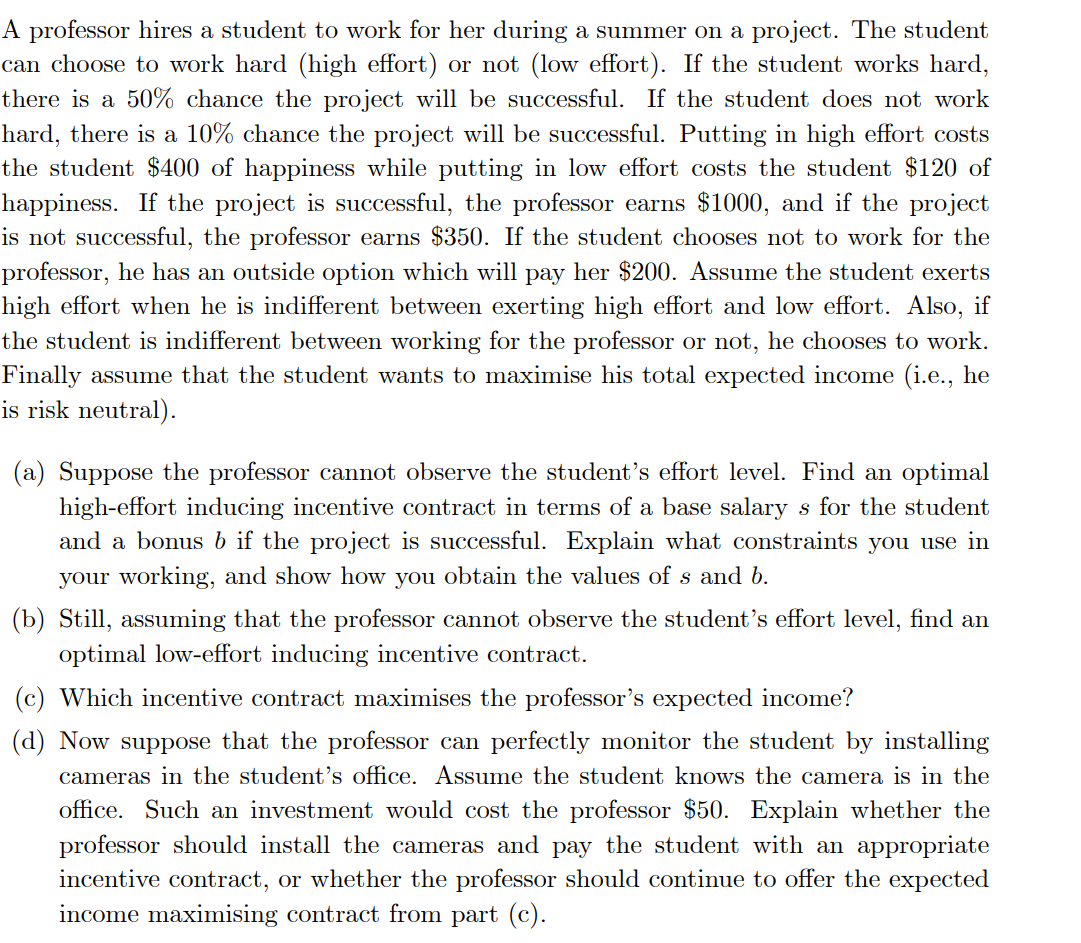Answered step by step
Verified Expert Solution
Question
1 Approved Answer
A professor hires a student to work for her during a summer on a project. The student can choose to work hard (high effort)

A professor hires a student to work for her during a summer on a project. The student can choose to work hard (high effort) or not (low effort). If the student works hard, there is a 50% chance the project will be successful. If the student does not work hard, there is a 10% chance the project will be successful. Putting in high effort costs the student $400 of happiness while putting in low effort costs the student $120 of happiness. If the project is successful, the professor earns $1000, and if the project is not successful, the professor earns $350. If the student chooses not to work for the professor, he has an outside option which will pay her $200. Assume the student exerts high effort when he is indifferent between exerting high effort and low effort. Also, if the student is indifferent between working for the professor or not, he chooses to work. Finally assume that the student wants to maximise his total expected income (i.e., he is risk neutral). (a) Suppose the professor cannot observe the student's effort level. Find an optimal high-effort inducing incentive contract in terms of a base salary s for the student and a bonus b if the project is successful. Explain what constraints you use in your working, and show how you obtain the values of s and b. (b) Still, assuming that the professor cannot observe the student's effort level, find an optimal low-effort inducing incentive contract. (c) Which incentive contract maximises the professor's expected income? (d) Now suppose that the professor can perfectly monitor the student by installing cameras in the student's office. Assume the student knows the camera is in the office. Such an investment would cost the professor $50. Explain whether the professor should install the cameras and pay the student with an appropriate incentive contract, or whether the professor should continue to offer the expected income maximising contract from part (c).
Step by Step Solution
★★★★★
3.57 Rating (164 Votes )
There are 3 Steps involved in it
Step: 1
a Suppose the professor cannot observe the students effort level Find an optimal higheffort inducing incentive contract in terms of a base salary s for the student and a bonus b if the project is succ...
Get Instant Access to Expert-Tailored Solutions
See step-by-step solutions with expert insights and AI powered tools for academic success
Step: 2

Step: 3

Ace Your Homework with AI
Get the answers you need in no time with our AI-driven, step-by-step assistance
Get Started


